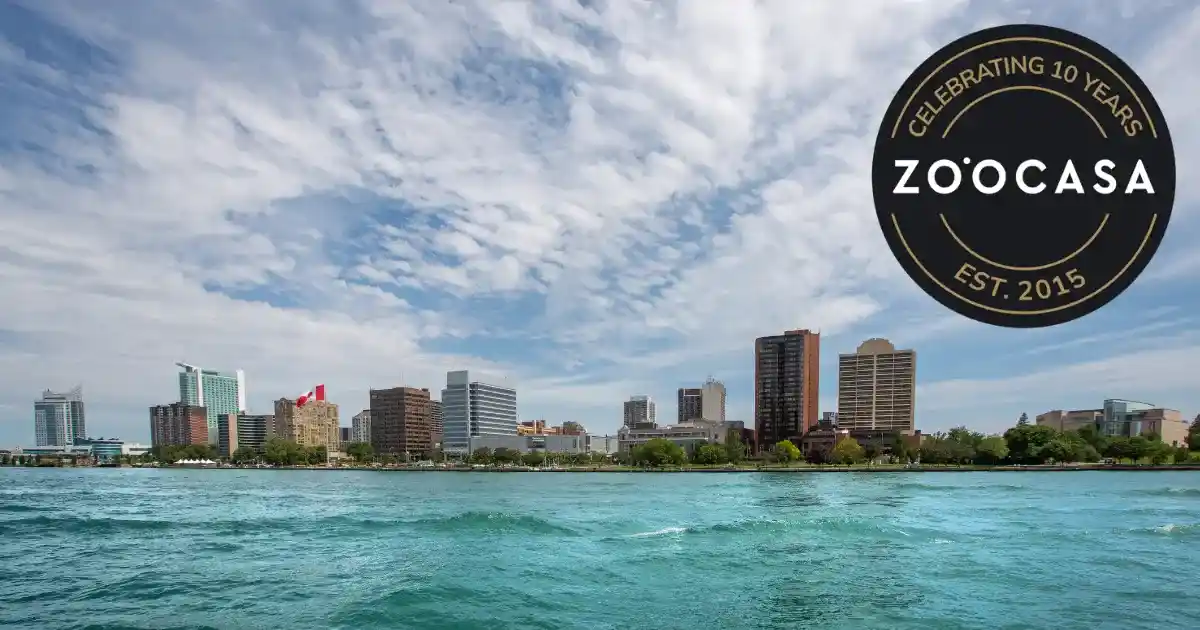
If you bought a home in 2015, you probably scored a much lower mortgage payment than today’s buyers. Interest rates had been declining from a high of 3.38% in October 2013, falling to 2.43% by June 2015. Compared to today’s rates, which sit above 3.8%, the rates in 2015 were hard to beat.
Those low interest rates, coupled with lower average home prices, make 2015 average mortgage payments nearly half of what they are now. In some cities, mortgage payments have increased by as much as triple over the last decade. As income growth has crawled in comparison, 2025 homebuyers must budget carefully to afford rising homeownership costs. Luckily, not all cities have experienced the same level of price growth.
To better understand where average mortgage payments have risen the most, Zoocasa analyzed average home prices and mortgage payments across 22 major Canadian cities from 2015 to 2025. Payments were calculated using a 5-year fixed mortgage rate—2.43% in 2015 and 3.84% in 2025—based on a minimum down payment and a 25-year amortization period. All calculations reflect the average home price in May of each respective year.
Mortgage Payments Up By Over $1,000 in Most Cities
Across the 22 cities analyzed, the average increase in monthly mortgage payments between 2015 and 2025 is $1,670. Just five cities saw an increase below $1,000: Edmonton, Regina, Saskatoon, Winnipeg, and Newfoundland & Labrador (Note: Average home price data for Newfoundland & Labrador was sourced from CREA, which does not provide city-level breakdowns for the province).
With Regina’s average home price increasing by just $35,000 over ten years, rising interest rates have had a relatively limited impact on homeowner budgets. Average monthly mortgage payments increased by only $408, from $1,407 in 2015 to $1,815 in 2025. Still, for owners with a limited budget, an extra $408 a month might require serious financial trade-offs. Trade workers, for instance, already require over 15 years to save for a 20% down payment, while those in the service industry need to save for over 30 years. For these professionals, every extra dollar makes a difference.
- Read: Canada’s Hottest Condo Market of the Last Decade Might Surprise You (It’s Not Toronto or Vancouver)
But while a $408 increase might be challenging for some budgets, a $2,000 increase is nearly impossible for most. Toronto’s average mortgage payment increased by $2,745 from 2015 to 2025—the largest dollar increase among all 22 cities. Although Toronto’s home prices have come down from their pandemic peak, homeownership costs are still steep. Toronto homeowners will spend an average of $5,563 per month on mortgage payments.
Vancouver has the highest average home price at $1,268,885, but its price growth in recent years has been more moderate compared to Toronto. Despite this, the city has still seen a significant increase in average mortgage payments, rising from $3,884 in 2015 to $6,279 in 2025. However, Vancouver’s dollar increase is smaller than in cities where home prices have climbed more rapidly, such as Victoria, Fraser Valley, and Kitchener-Waterloo.
Ontario’s Secondary Markets Top List for 10-Year Mortgage Increases
It’s not just Canada’s most expensive housing markets that are seeing costs rise; many secondary markets have had mortgage payments more than double since 2015.
Windsor-Essex is a notable example, recording the most significant percentage increase in mortgage payments since 2015. The average mortgage payment tripled over the last decade, increasing from $903 in 2015 to $2,794 in 2025. The surge in mortgage costs was largely driven by Windsor’s average home price more than doubling during this time, increasing from $205,695 to $549,119.
Niagara Region, London and St. Thomas, and Kitchener-Waterloo all saw mortgage payments increase by over 150% over the last decade. But among these, Kitchener-Waterloo had the greatest dollar increase. Similar to Windsor, home prices in Kitchener-Waterloo more than doubled from 2015 to 2025, resulting in a $2,471 increase in the average mortgage payment. That’s a bigger difference than Vancouver and Hamilton-Burlington.
Northern Ontario wasn’t immune to rising homeownership costs either. Sudbury’s average mortgage payment increased by 148.5% to $2,728, while Thunder Bay’s average mortgage payment increased by 122.1% to $2,192. These represent greater percentage increases than those seen in much larger markets like Ottawa and Toronto.
Will Mortgage Payments Decrease in the Future?
Although the past decade has brought sharp increases in mortgage payments, the outlook is not entirely bleak. Current five-year fixed mortgage rates have been steadily decreasing since October 2023, when they reached a high of 5.49%. Since January 2025, interest rates have remained under 4%. Whether they fall further will depend on bond yields and broader inflation trends.
Many economists expect the Bank of Canada to announce at least two more rate cuts in 2025, which would bring relief to variable rates and could encourage fixed rates to drop depending on the bond market reaction.
Further complicating interest rate trend predictions is the uncertainty in global markets, particularly in response to U.S. tariffs. The Bank of Canada’s next rate announcement, scheduled for July 30, 2025, may offer clearer direction on where the economy and borrowing costs are headed.
Looking for homes that fit your budget? Start your search with Zoocasa today.













